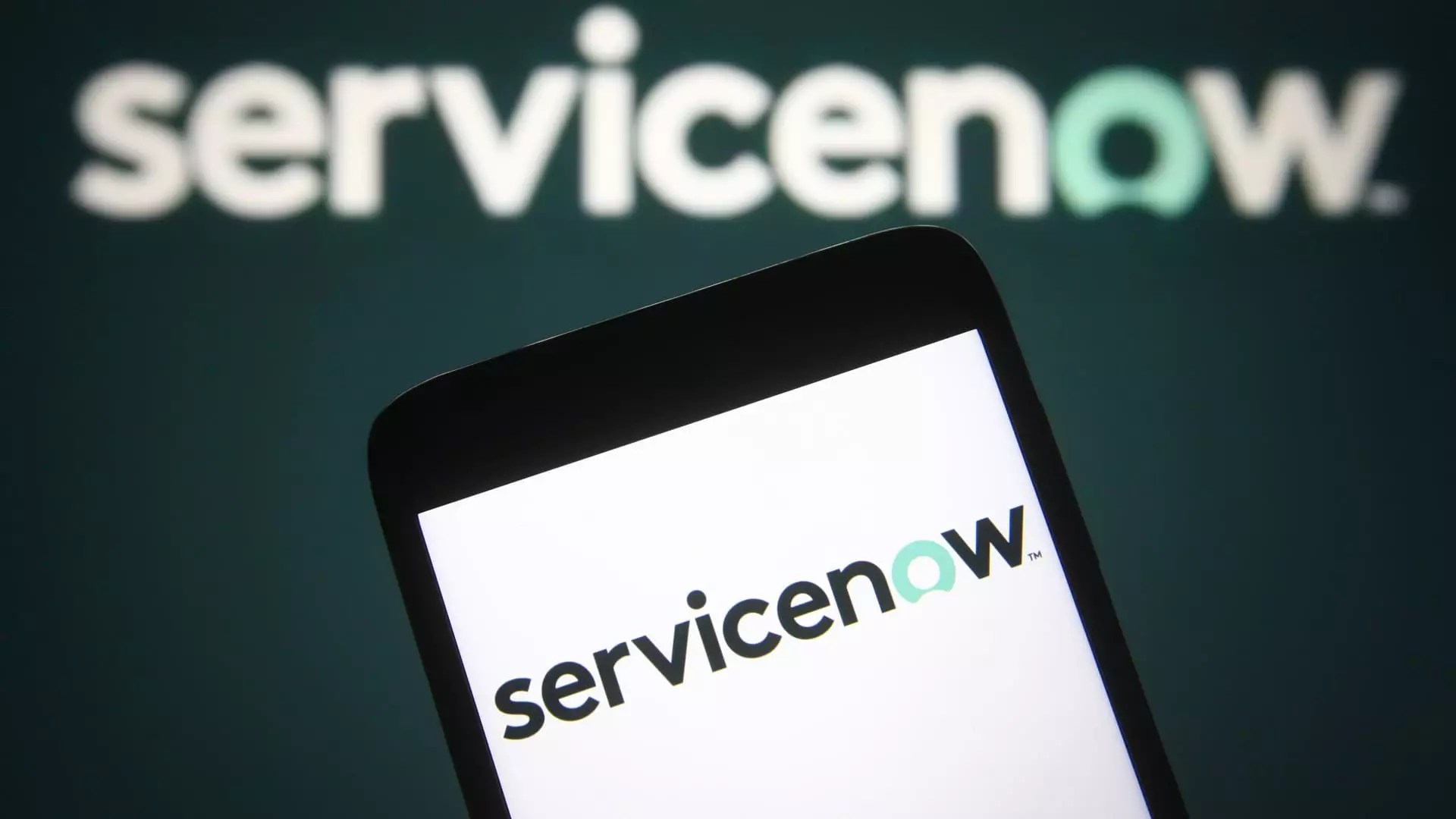In the world of technology and software, few names have been appearing more frequently in analyst reports than ServiceNow. Recently, the company announced remarkably strong results for its first quarter that exceeded Wall Street expectations, causing a flurry of excitement among financial analysts. As shares surged nearly 8% in pre-market trading, the stock was lauded as a beacon of hope amid growing fears of an economic slowdown. However, while the reports appear commendable at first blush, a deeper examination reveals potential red flags that investors must confront.
The Illusion of Resilience
Analysts have praised ServiceNow for supposedly “demonstrating resilience” against a volatile macroeconomic backdrop. But what does this resilience actually mean? It seems unjust to celebrate the company merely for surpassing a “low-bar.” The market is rife with uncertainties, and tech stocks have been feeling the heat as global economic conditions fluctuate. Rather than viewing ServiceNow’s quarter as a sign of good health, prudent investors should be wary of the underlying conditions contributing to its performance. If ServiceNow’s results are an aberration in a struggling market, should we truly be applauding them?
JPMorgan’s analyst Mark Murphy’s 12-month price target of $1,020 suggests an impressive 25% upside, yet this optimism deserves scrutiny. Following a pattern many companies have adopted in the tech sector, ServiceNow characterized its Total Addressable Market (TAM) as ballooning to $275 billion by Fiscal Year 2026. A lofty TAM is a common marketing tool for tech firms seeking to impress investors. Every growing company wants to sell its vision, but an inflated TAM doesn’t necessarily equate to sustainable performance.
Managing Expectations Amid Hype
ServiceNow’s results also shed light on the broader trend of managing investor expectations. Wells Fargo analyst Michael Turrin remarked on the “strong tone across multiple fronts” following ServiceNow’s first-quarter results, but we must ask: at what cost? The focus on “highest quality franchises” is reassuring, but the vagueness around what constitutes “quality” raises eyebrows. ServiceNow does check many of the boxes for a solid product offering, but hype can lead to inflated valuations. The excitement generated by this quarter could serve to distract from more pressing issues surrounding tech stocks at large.
Moreover, while Deutsche Bank’s Brad Zelnick claims the company’s roadmap is “de-risked,” it must be pointed out that this characterization is highly subjective and could lead to misplaced investor confidence. If ServiceNow’s optimistic performance is perceived as mainstream in a beleaguered economic climate, then investors could become complacent, ignoring the vulnerabilities that exist.
The Defensive Product Debate
Goldman Sachs analyst Kash Rangan labels ServiceNow as a defensible business in the event of a downturn. This stance relies heavily on the assumption that the factors propelling IT service management and operations will remain stable. However, to paint such a picture is to ignore historical context. Just because 70-75% of ServiceNow’s revenues stem from seemingly ‘defensive’ categories does not guarantee immunity from broader market forces. With IT departments increasingly pressured by budget constraints, the assumption that demand for IT services will remain rigid may be overly optimistic.
Citigroup’s analyst Tyler Radke adds another layer of complexity when he hints at growing opportunities through GenAI and new customer relationship management products. Yet, can we take these opportunities at face value? The predictive nature of tech innovation does not always guarantee a straightforward execution. If ServiceNow is betting its future on advancements in generative AI and related tech without significant groundwork, it may well be playing with fire.
Concluding Thoughts on the Euphoria
The frenzy surrounding ServiceNow’s financial results speaks volumes about Wall Street’s thirst for any glimmer of hope amidst uncertainty. The reality is, the enthusiasm surrounding this tech company should prompt investors to pause and reflect critically. The common practice of glorifying earnings without adequately investigating the underlying conditions can leave investors exposed when the market reality inevitably shifts.
Rather than joining the chorus of praise for ServiceNow, a more measured approach that incorporates skepticism may be warranted. The current surge could be nothing more than a momentary blip in a potentially troubled future. In today’s unpredictable financial landscape, investors are better served by asking hard questions rather than succumbing to the euphoria of the moment.


Leave a Reply